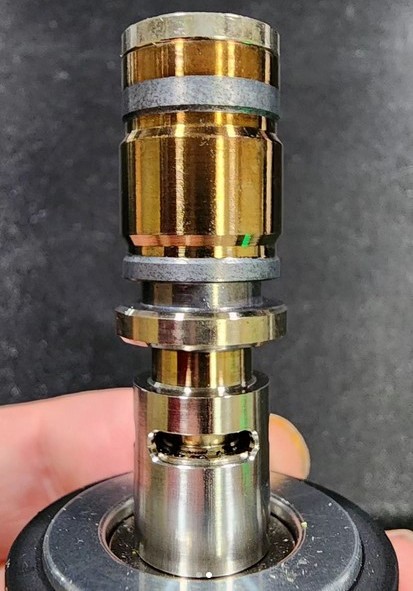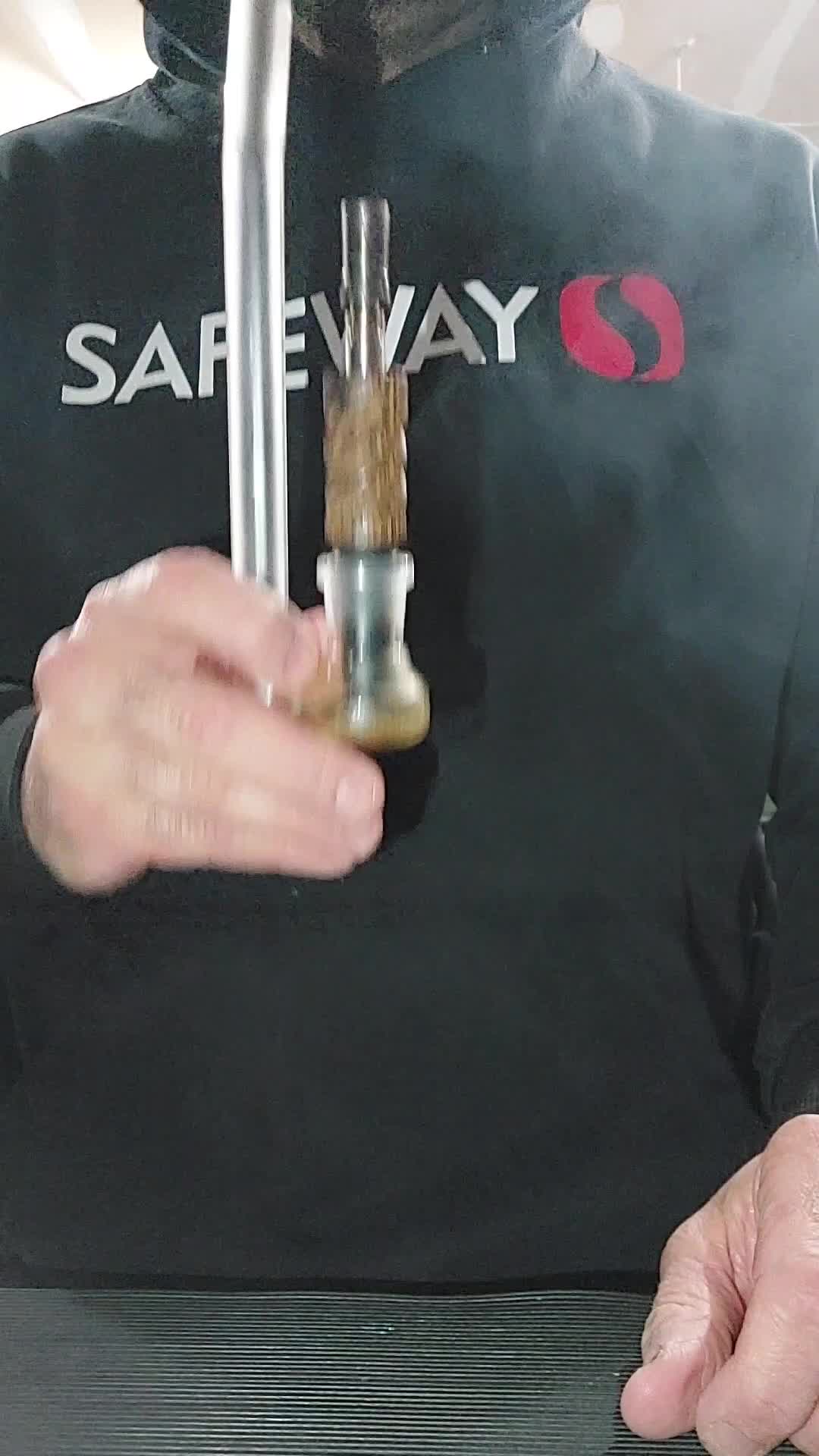The Anvil was touted as convection heavy with some conduction. And judging by the lack of heat temper, the Anvil's standard bowl doesn't normally exceed 170°C, so it's rapid full extraction would seem to be mainly from convection.
If I heat the Anvil as I would for a light roast, but then don't draw any air through, after about 10 seconds the load is steaming slightly but still basically green, and after 15 seconds I can smell it toasting. And if I heat as I would for a dark roast and do the same thing, I can smell it toasting at 10 seconds and the load is a mix of green and lightly roasted. So some conduction is there.
Without fresh air to take heat from the oven it stays hotter than intended leading to more conduction than normal, and I suspect that repeatedly heating the Anvil without inhaling would actually cause the bowl (and perhaps the condenser head) to tarnish. Of course that's not how the device is supposed to be used and the conduction is exaggerated, but removing convection from the equation is the best way I can think of to objectively assess the conduction.
The proportions of convection and conduction depend a lot on how the device is used, and this experiment suggests that (along with heating position) the rate of airflow and time taken will affect the amount of conduction experienced. But when heated normally and finished promptly (especially in one hit) I'm convinced that the Anvil's vapour is indeed produced mostly by convection.
There is clearly some conduction during the heat up and decreasing that time will reduce it. Billazoot's method both eliminates any preliminary conduction and reduces its potential in the oven, and shows that it's not actually necessary for good extraction. The very fast heating (10-13 seconds) demonstrated by the Forge should also get the Anvil closer to pure convection.
If I heat the Anvil as I would for a light roast, but then don't draw any air through, after about 10 seconds the load is steaming slightly but still basically green, and after 15 seconds I can smell it toasting. And if I heat as I would for a dark roast and do the same thing, I can smell it toasting at 10 seconds and the load is a mix of green and lightly roasted. So some conduction is there.
Without fresh air to take heat from the oven it stays hotter than intended leading to more conduction than normal, and I suspect that repeatedly heating the Anvil without inhaling would actually cause the bowl (and perhaps the condenser head) to tarnish. Of course that's not how the device is supposed to be used and the conduction is exaggerated, but removing convection from the equation is the best way I can think of to objectively assess the conduction.
The proportions of convection and conduction depend a lot on how the device is used, and this experiment suggests that (along with heating position) the rate of airflow and time taken will affect the amount of conduction experienced. But when heated normally and finished promptly (especially in one hit) I'm convinced that the Anvil's vapour is indeed produced mostly by convection.
There is clearly some conduction during the heat up and decreasing that time will reduce it. Billazoot's method both eliminates any preliminary conduction and reduces its potential in the oven, and shows that it's not actually necessary for good extraction. The very fast heating (10-13 seconds) demonstrated by the Forge should also get the Anvil closer to pure convection.







